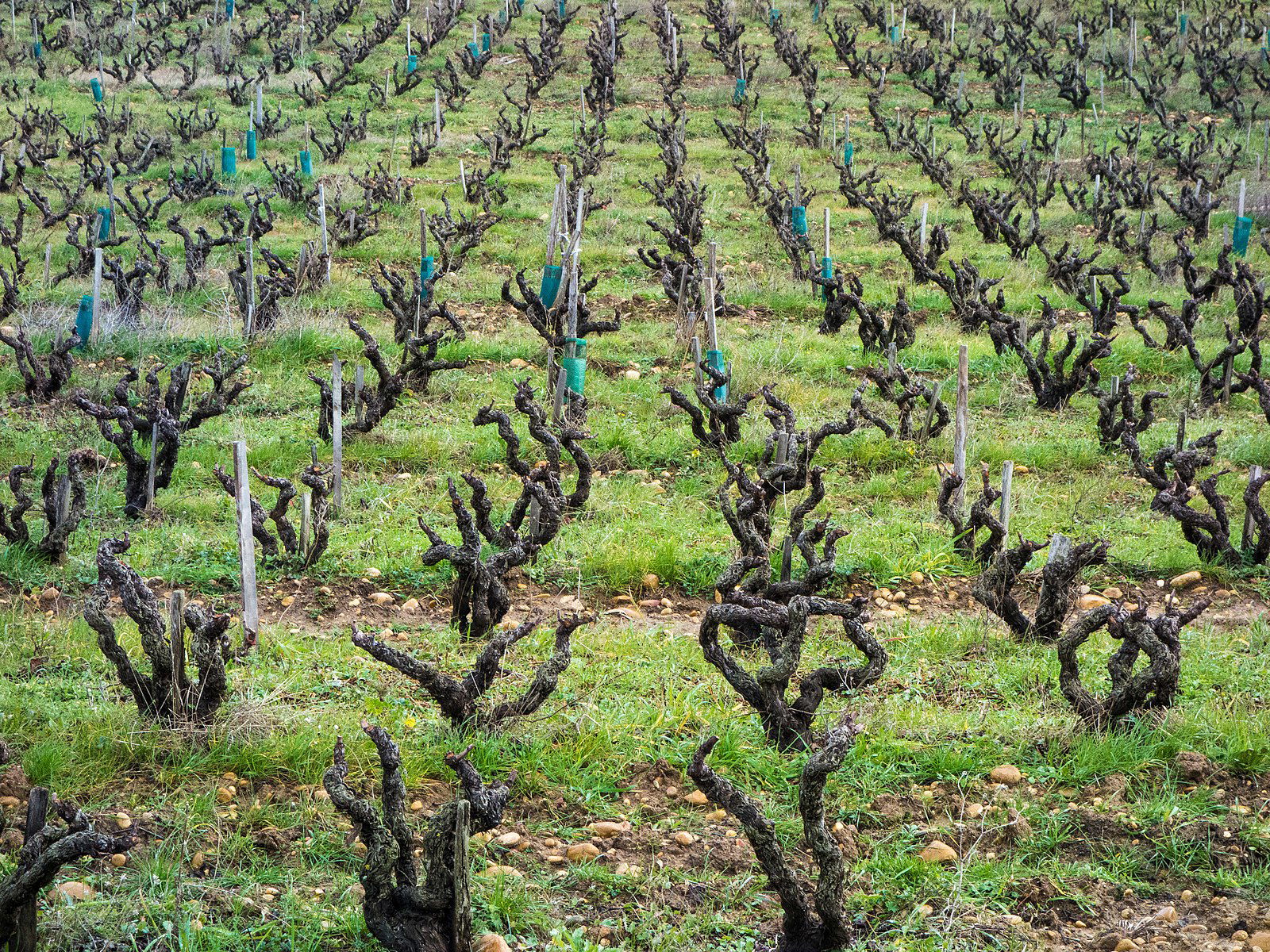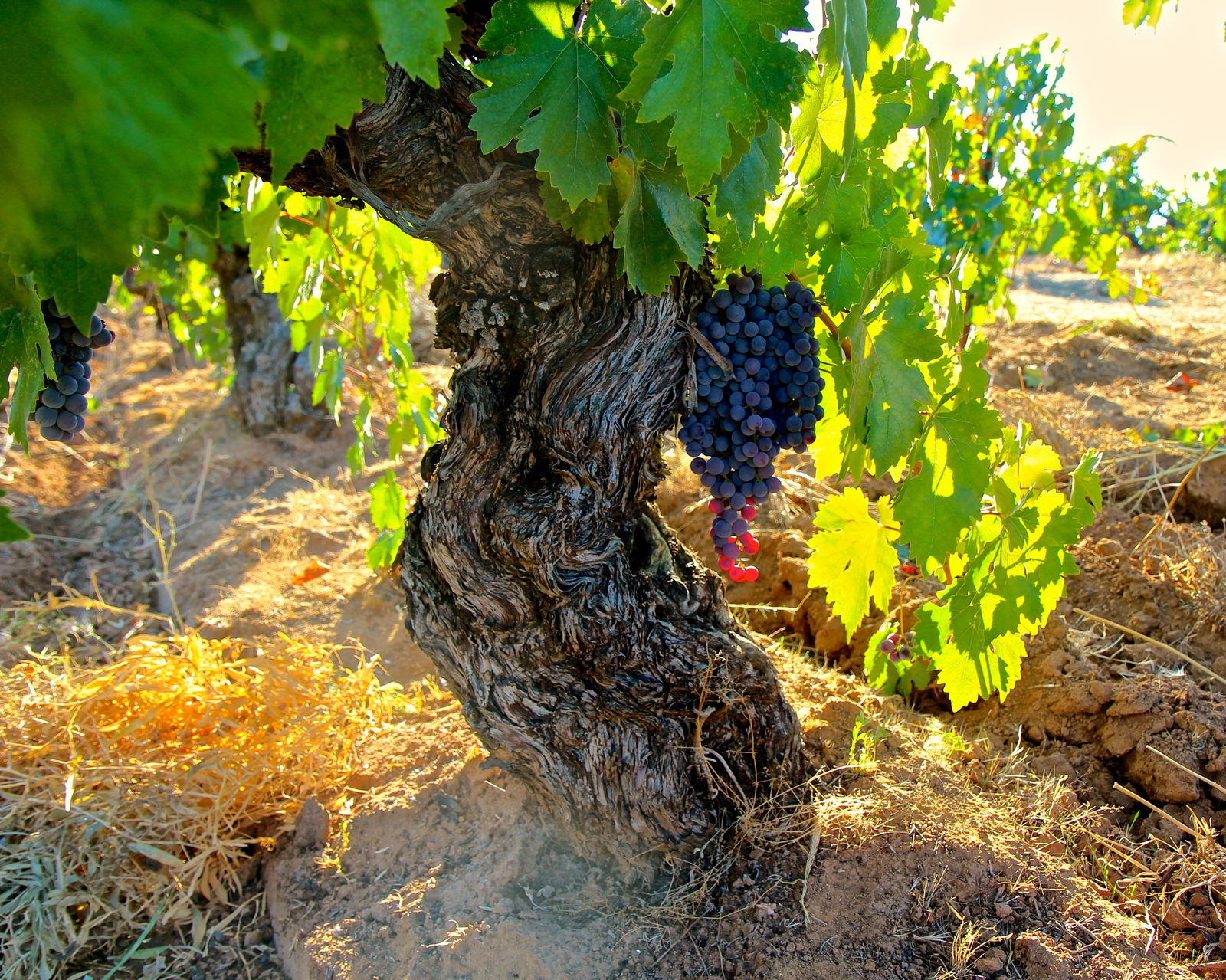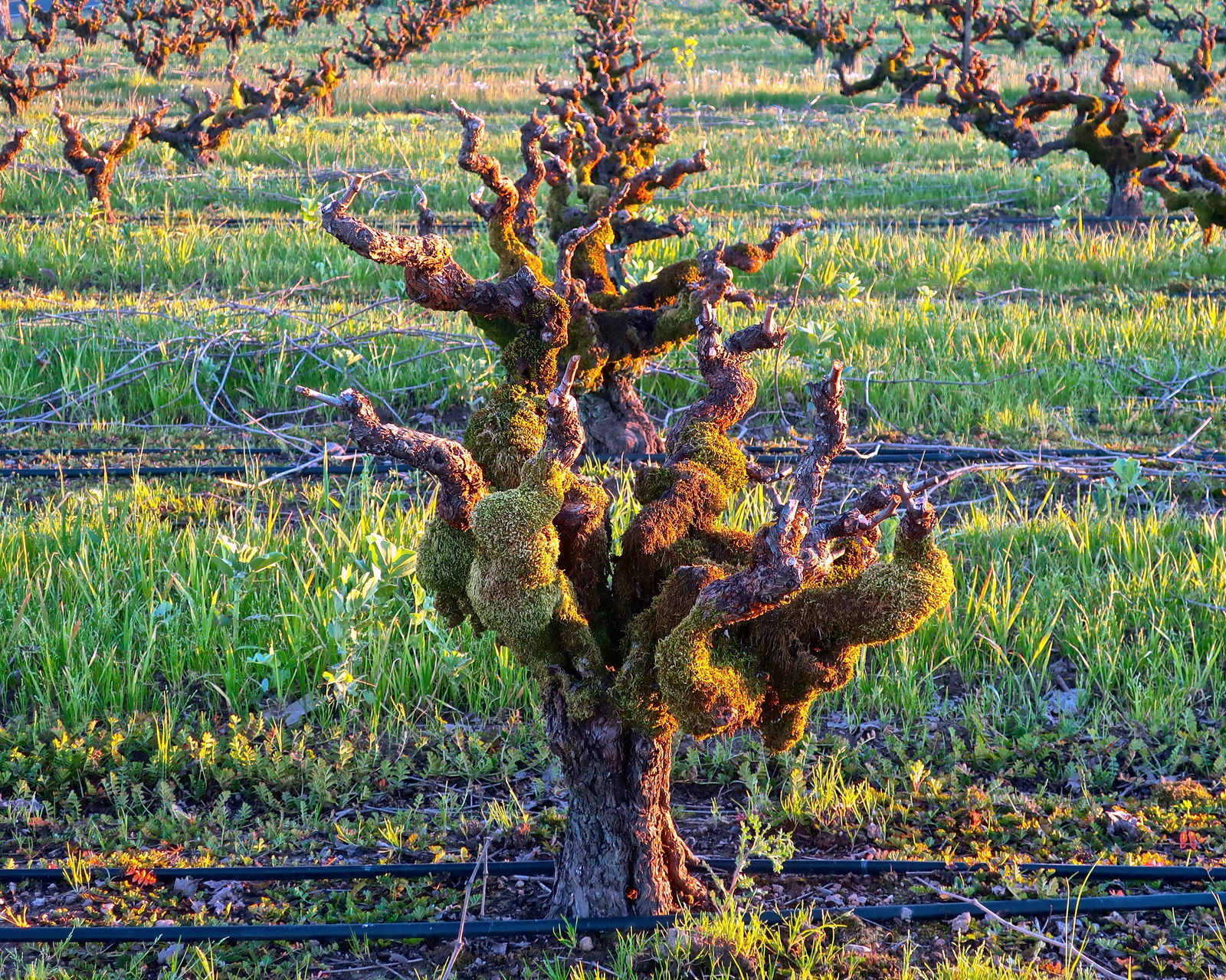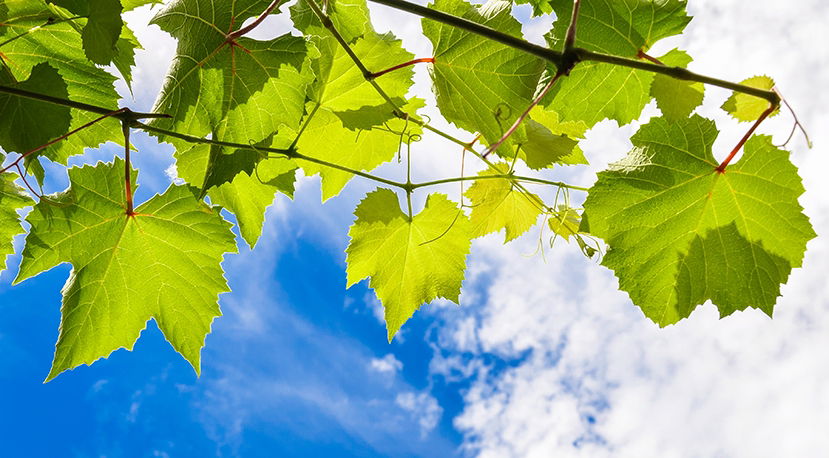BLOG
Why appreciation of old vines is challenging yet more important than ever
Randy Caparoso Viticulture Insights

WSG is proud be the first Educational Partner of The Old Vine Conference. Read more to find out how this dynamic non-profit organization is actively creating a global network of old-vine disciples while raising awareness through education.
The economic and social relevance of old vines is real, but the structure of the global wine industry stacks the odds against the regenerative commercial viability of old vines. The result is that healthy old vineyards of cultural resonance and unique qualitative potential are lost because they can’t be made to pay.
The Old Vine Conference is a non-profit organisation whose aim is to bring together a global network to create a new category for wine from heritage vineyards. The Old Vine Conference works to safeguard old vines of cultural and ecological value by connecting, educating and inspiring the global wine industry through conferences, research, partnerships, tastings and fieldtrips.
Old vines are officially a thing.
For years and years, appreciation of old vines has fallen almost exclusively in the domain of growers who nurture old plantings far beyond the conventional shelf life of productive grapevines, typically thought of as somewhere in the range of 25 to 35 years.
The reasons for farming vines much longer than that have been, for past generations, largely selfless, entailing motivations not much more than the importance of retaining family heirlooms. Maybe nine parts sentiment, one part value or practicality.
You know how pet dogs often resemble their humans (or is it vice versa)? Custodians of old vines are often like their plants, creaky and cantankerous, stubborn and gnarled, wise beyond belief—the wine world's proverbial Golden Retrievers, standing guard by the cattle gate.

The survival of old vines, of course, has also been taken up as a cause by vintners who value old vine plantings as much as their growers, plus wine lovers who appreciate the products of vintners harboring this particular predilection.
Most recently, old vines have been benefiting from the attention garnered by groups issuing clarion calls. Props definitely go out to organizations such as California's Historic Vineyard Society, The Old Vine Conference and The Old Vine Registry hatched in the UK, South Africa's Old Vine Project, and Barossa Valley's groundbreaking Old Vine Charter for sounding the alarm: Old vine plantings are bound to disappear if they are not better appreciated, studied and promoted—by the industry, by the media and trade, and mostly by wine lovers themselves.

Why increasing appreciation of old vines is still a tall order
Skepticism over the value of old vines is understandable, considering the fact that wines of high quality and delineation of character are also made from younger vines farmed in traditional rotations, in which older vines are routinely replaced for reasons of optimization of grapevine health and vineyard productivity. Winegrowing, after all, is big business, and most of the time, there is little room for sentimentality in the business world.
Old vine viticulture, however, presupposes a slightly different valuation of wine quality. It is a wine quality that is a little more skewed towards the concept of terroir, commonly defined as "sense of place."
With or without the use of that terminology, here is what we know from our most recent work in California: The older the vines in a given vineyard, the more likely wines produced from those vines are able to express sensory qualities directly attributable to their source, or "place." We know this because if you make wines from younger vines from, say, the exact same vineyard, those wines do not exhibit as much delineation of character, in the nose and on the palate, as wines from the older vines.

At what point, however, does this observation become less a point of fact than, at best, a tortuous theory? First, it is important to break down the definition of terroir itself. Not everyone agrees on it, although I suspect it is more of an issue of misinterpretation of the concept, despite its common usage. For our purposes, let's go with the following threefold consensus:
- Terroir is a summation of growing conditions within a given vineyard or region related to Nature (climate, soil, aspect, sunlight, altitude, vintage conditions, etc.).
- Terroir entails conscious human intervention, since neither viticulture nor winemaking occur without actual decision-making, labor, experience, skill or artistry, economic constraints or wherewithal, and anything else involving input.
- Terroir is also a term that can be used to describe manifestations of sensory qualities directly attributable to a vineyard or region, which end up in a bottle and are ultimately perceived by a beholder.

Terroir as it relates to old vine plantings is directly tied to the fact that grapevines that are well adapted to specific places, with longer than average histories of cultivation in specific or traditional fashions, are more likely to express a sense of place, respective to individual sites.
If anything, much of the misunderstanding of what gives old vine plantings value is due to the fact that that their end products are often perceived conventionally, in ways that are more mythical than empirical in relation to causation: That is, the myth that all old vine plantings are, by nature of vine age, exceptionally low yielding, and therefore more likely to produce wines that are "big," darker in color, and intense or more concentrated than wines made from younger vines—sensory qualities commonly associated with old vine wines.

Two things wrong with this assumption:
1. Many old vine wines are not big, dark, intense or concentrated—if you expect these qualities in all old vine bottlings, you are bound to be disappointed, or disabused of the value of old vines—but rather, elevated only in terms of sensory qualities reflecting a specific vineyard or appellation, whatever those qualities may be (which, often enough, are the opposite of "big," "dark," "intense" or "concentrated").
2. While old vine plantings are low yielding, for the most part they are not so low yielding that they do not meet profit expectations. If they did, almost all the old vine plantings existing in the world today would have been torn out long ago. As previously mentioned, winegrowing is big business, and even old vine plantings need to meet productivity levels in order to make them worth keeping in the ground.

I cannot speak authoritatively about old vine wines grown in France, Italy, Spain, Greece, Australia, South Africa, or any other regions outside of California, but I have appreciated old vine California wines as much as anyone. Here is the thing about old vine bottlings in California, however: Their production and appreciation have evolved in crucial ways, mostly because, similar to the increasing use of the word terroir in the wine industry, all winemaking involves conscious human decisions, not just artistically, but also in respect to marketing and branding objectives.
Which, in fact, is why much of the media, trade and consumers still think the ultimate expressions of old vine wine are big, dark and concentrated. If you think of venerated old vine plantings as being like contestants in beauty pageants—in other words, starting out with a certain amount of core beauty to work with—then you might understand why many lots of old vine wine are subjected to a good amount of "beautifying." They go through lots of work-outs and are slathered with makeup to exaggerate natural qualities, donned in perfect dresses to show off the body, and trained in practiced ways of speaking before taking the stage.

This explains a lot of of the standardized ways in which grapes from old vine blocks are treated, involving...
- Picking grapes ultra-ripe, typically at high sugars, to ensure maximized fruit expression.
- Adding water to wines in the winery to achieve targeted alcohol levels.
- Adjusting acidity and utilizing other amendments to balance deficiencies or enhance original qualities
- Fermenting with a chosen yeast to meet sensory goals
- Blending with complimenting varieties (more often than not, not grown in the same vineyard), also to meet sensory goals.
- Aging in favorite choices of oak barrels to increase complexity and, typically, add "markers" consistent with a chosen brand identity.
This is not to be critical because, as I keep repeating, wine production is a gigantic industry, and even companies that produce old vine wines for the sheer love of it need to craft competitive styles of wine to toe a bottom line. Still, the more that is done to a wine sourced from an old vineyard, the further you get away from the pure taste of that vineyard.

These days, there are more and more handcraft producers in California who are deliberately steering away from this approach. Most of them are on the small side, but they are making waves, the way so-called boutique wineries revolutionized the perception of California wine back in the 1950s, '60s and '70s.
All the same, many if not most of the state's most established old vine specialists, even those known for minimal intervention and native yeast fermentation, will still put their wines through the paces to meet industry standards or their own brand-related goals, the way beauty contestants are dolled up to meet the expectations of judges and audiences. It's all about making a bang; or, as often the case in commercial wines, scoring "points."
Be as it may, the industry, in California at least, continues to lose more acreage of old vine plantings than it gains. A big reason is because the taste of old vine wines—that is, the taste of the terroir intrinsic to individual old vine sites, as well as in entire regions where old vine plantings are found—is still blurred in large part by winery manipulations. It is hard to appreciate old vine wines when you don't know exactly what they're supposed to taste like.

Therefore, old vine wines still remain a minority preference among consumers. For most wine lovers, the age of vines is neither here nor there. They don't see what the advantage is because they aren't necessarily tasting it. Heck, much of the media as well as wine professionals in the trade still have vague notions of what many old vine wines taste like because most commercial products are less about vineyards and more about branding or arbitrary interpretations of varietal character.
I know this because, to cite one example, I often hear wine professionals say the following: "I love Lodi Zinfandels because they're so big, rich and round," or something to that effect. The reality, though, is when Lodi Zinfandels are made with minimal artifice, they are actually the opposite: light, delicate, flowery, and edgy with acidity rather than round or fat. And the older the vines in Lodi, the more light, delicate, flowery and edgy they are.
When a group of Lodi Zinfandel specialists first began bottling minimal intervention Zinfandels under the Lodi Native label (in 2012), the most common thing we used to hear when the line-up was presented in professional circles was, "Why, these wines don't taste like Zinfandel at all." What they meant to say was, Lodi Native style Zinfandels do not taste like commercial expectations of Zinfandel, which is something largely defined by wines grown in better known regions such as Sonoma County. Pure Lodi style Zinfandels don't taste like Sonoma County Zinfandels because they aren't grown in Sonoma County. They taste like the individual vineyards in Lodi where they come from. Simple as that.
Again, this is not to say that an old vine Zinfandel is not "improved" by a good dose of Petite Sirah, or that a Mataró cannot be enhanced by judicious amounts of oak or by blending from multiple vineyards. But the more you doctor up an old vine wine, the more you blur its original profile. The individuality of old vine wines would be easier to appreciate if consumers, trade and media were able to perceive them in clear-cut ways.
The way, for instance, we are able to readily delineate a Musigny from a Chambertin or Sancerre rouge, a Côte-Rôtie compared to Cornas or Saint-Joseph, a Pinot Noir from Willamette Valley's Dundee Hills in comparison to ones from McMinnville, Russian River Valley, Fort Ross-Seaview, Santa Lucia Highlands or Sta. Rita Hills.
To know, know, know these kinds of wines is to love, love, love them. To achieve the same level of appreciation for old vine wines, they need to be presented with skill, with science and artistry, and also as with as much truth to their intrinsic terroir as possible.


